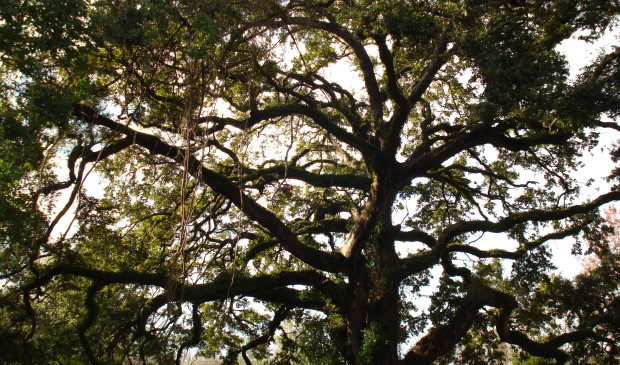Urban Forestry Board critical of USA Cycling report
Friday, April 17, 2015 by
Audrey McGlinchy, KUT Members of the Urban Forestry Board are highly critical of the methods used in a report by USA Cycling that claims the city, not the cycling organization, caused most of the damage done to 57 trees in Zilker Park during a Cyclocross event in January.
USA Cycling said in January it had budgeted funds to pay for repairs to the park, but a wide difference of opinion has developed between the cycling group and the city over the extent of the damage.
Dozens of cyclists participated in the National Championship event in the park Jan. 6-12. Heavy rains made parts of the course a quagmire and reportedly left numerous tree roots exposed to damage from the riders. Conditions were such that the race was postponed for an extra day and the finals were held on a Monday.
Board Member Keith Brown, an arborist, condemned the work of a consulting arborist, Patrick Wentworth, who was hired by USA Cycling to conduct an independent review of tree damage in Zilker Park. The review concludes that the Cyclocross event held in the park was not responsible for crippling more than 50 trees during the January race.
The report, now in the hands of the city’s legal team, says Wentworth used a measuring tool called a soil penetrometer to conclude that the soil compaction — which if high could jeopardize a tree’s ability to thrive — was “minimal to nonexistent.”
Brown called the method “chintzy,” or cheap.
“That tool, you can make it read whatever you want it to read,” said Brown, at the board’s meeting Wednesday. He said that as an arborist, he had probably owned a penetrometer but that it most likely ended up in “a dumpster somewhere.”
Whatever the instrument, the city says the USA Cycling racers are responsible for soil compaction around the park’s trees. Arborists say when soil surrounding a tree is compacted, it becomes harder for new tree roots to break through, and for water and air to feed already existing roots. In a one-year rehabilitation plan revealed in late January, Parks and Recreation Forester Regina Ramos asked USA Cycling to address the soil compaction and other needs of the trees.
The city is asking USA Cycling to provide 11,870 gallons for each of 32 watering days, mulch to protect the roots of the trees and metal poles and chain to keep people from walking over the roots and further compacting the soil.
In its report, USA Cycling called this watering amount “arbitrary,” given that most of the trees deemed damaged in the city’s report are native and can survive on Austin’s average annual rainfall — a little more than 32 inches per year. USA Cycling instead suggests adding mulch to 13 of the 57 trees, and injecting all of the trees with fertilizer.
The organization’s report also expresses some regret about what it calls the Parks Department’s “absence of good planning.” The city approved the Cyclocross event in 2012, and USA Cycling’s report says in that time the city could have gone over the racecourse more thoroughly with their officials.
In its original contract with the city, USA Cycling agreed to pay for the cost of any damages incurred during the event. The city has said it will continue to seek payment for what it says are heavily damaged trees.
Board members urged city arborist Lara Schuman to communicate to the city’s legal team the importance of deciding quickly who will pay for the tree damage. The longer they wait, the sicker the trees will become.
“We can’t wait too long to do something about the trees,” said Board Vice Chair Peggy Maceo.
“Live Oak in Lake Charles, Louisiana” by Marina84 (talk) Elizabeth Genovise – self-made. Licensed under CC BY-SA 3.0 via Wikipedia.
You're a community leader
And we’re honored you look to us for serious, in-depth news. You know a strong community needs local and dedicated watchdog reporting. We’re here for you and that won’t change. Now will you take the powerful next step and support our nonprofit news organization?











